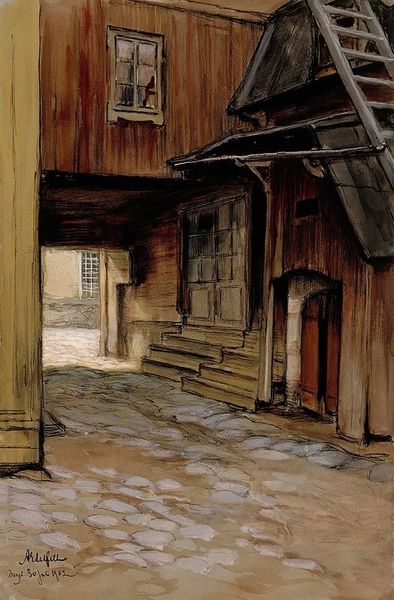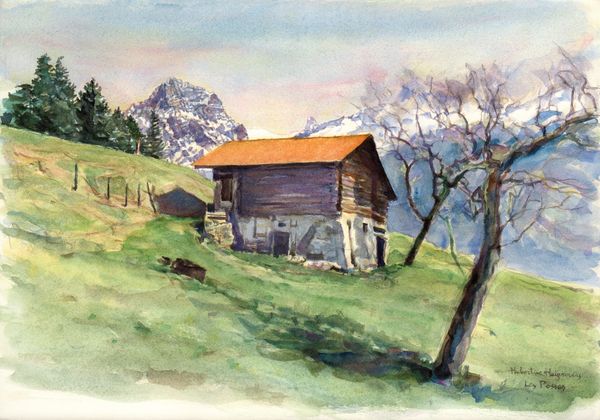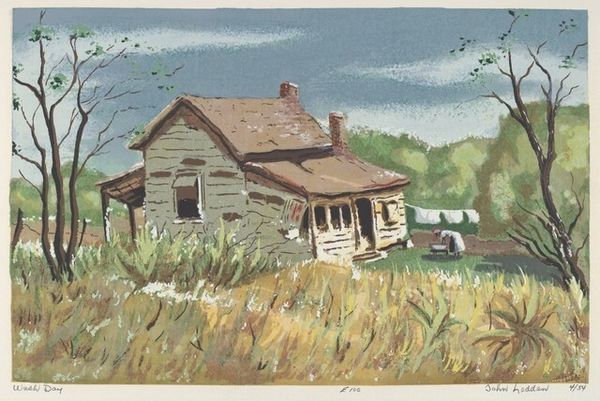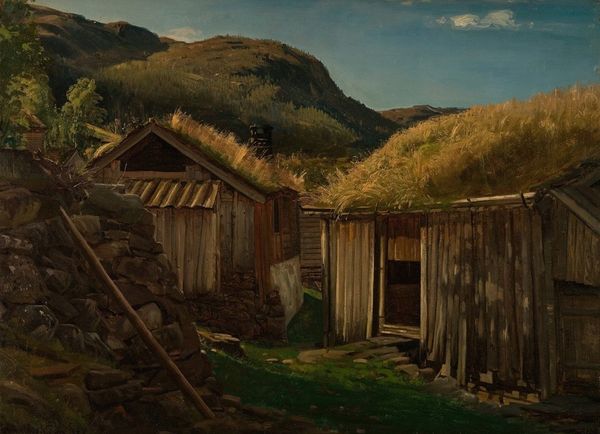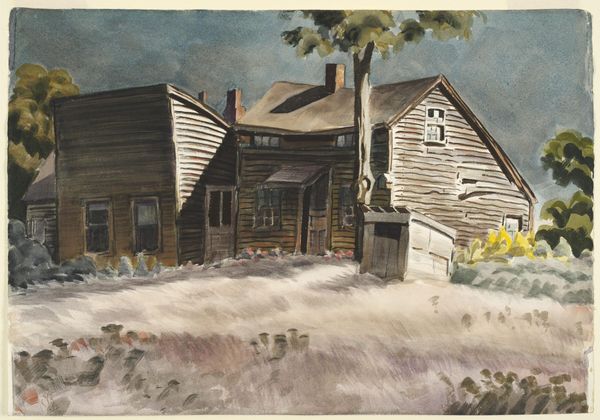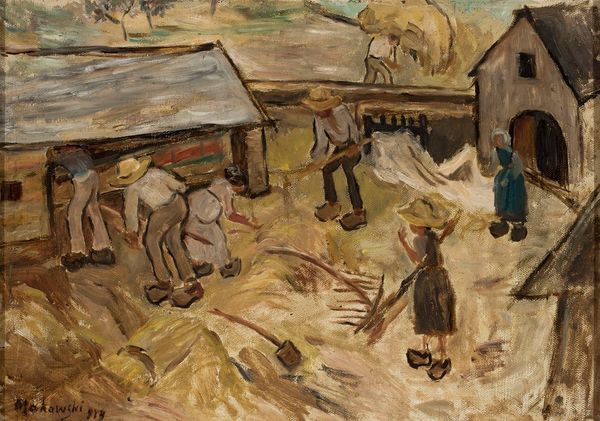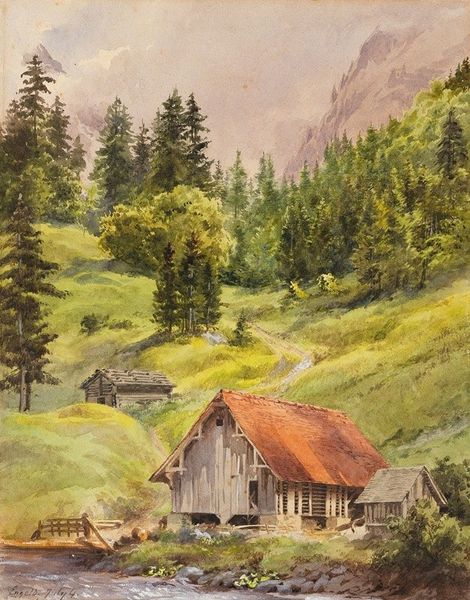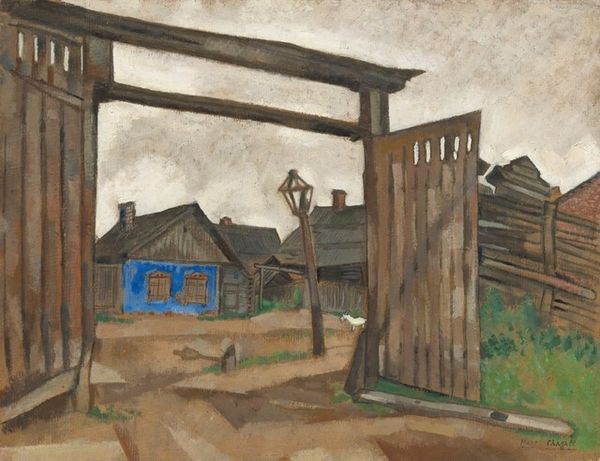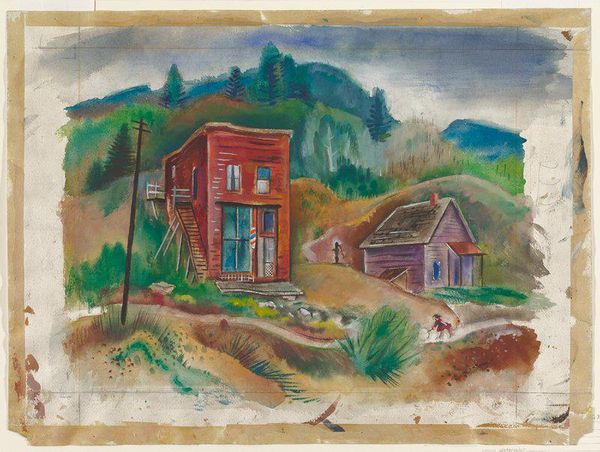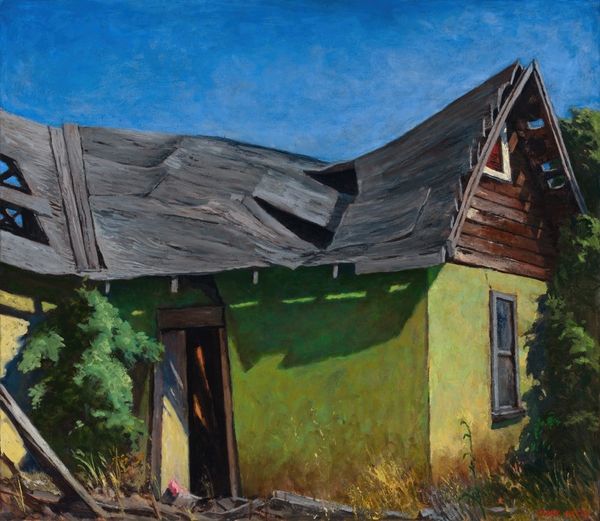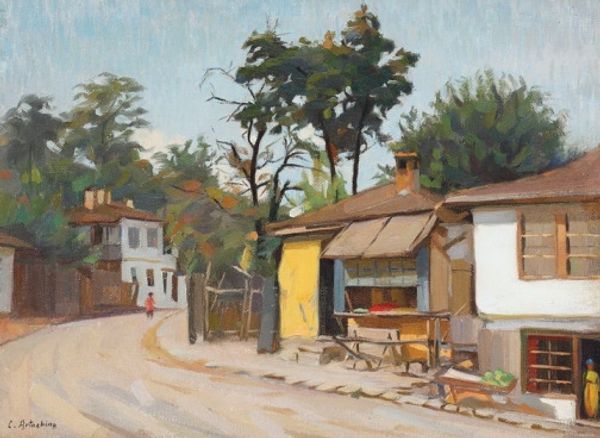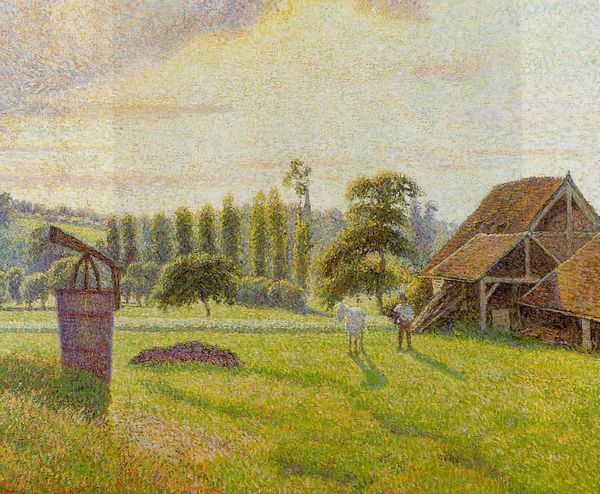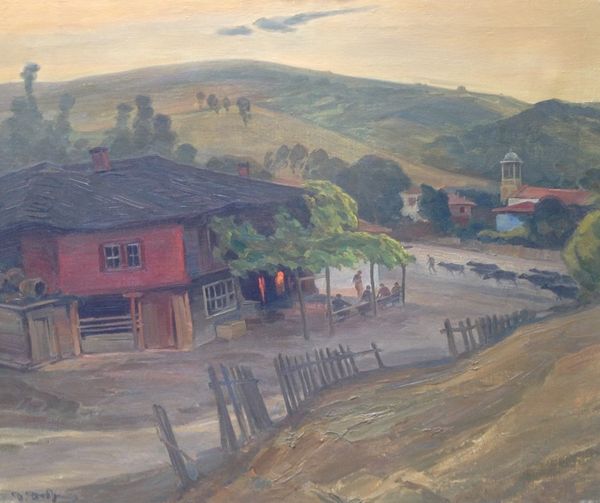
painting, watercolor, architecture
#
painting
#
landscape
#
oil painting
#
watercolor
#
genre-painting
#
modernism
#
watercolor
#
architecture
#
realism
Copyright: Zinaida Serebriakova,Fair Use
Curator: Editor: We’re looking at “Alps. Village in the Savoie” by Zinaida Serebriakova, painted in 1933, a watercolor and oil on canvas. It’s a rural scene with barns, hills, and the sun beating down. There’s a dog and some chickens wandering about. It gives me a sense of rural simplicity and everyday life, maybe even timelessness. What catches your eye when you see this? Curator: That's a great starting point. Considering Serebriakova's background, what strikes me is how this seemingly straightforward landscape intersects with the politics of representation. How does a woman, particularly a Russian émigré in 1930s France, depict rural life? Is she romanticizing the past or engaging with contemporary debates around land, labor, and national identity? The genre painting elements add another layer of interest. What do you make of them? Editor: The chickens, the dog... It feels folksy, a down-to-earth glimpse into a working village. So, it might romanticize rural life, maybe distance her from the political issues? Curator: Perhaps, but consider also the act of observation itself. By focusing on the ordinary, she could be subtly challenging the dominant narratives. What is considered worthy of artistic attention? Does focusing on the mundane negate political engagement, or does it offer a different kind of commentary? Also, notice how the architecture isn’t idealized. Do you think the artist chose that for any reason? Editor: I hadn’t thought about it that way. The solid but humble buildings feel very matter-of-fact and almost anti-romantic in style and rendering. I now see the work can both be and critique romantic pastoral views, as a statement of presence in a specific place in a time. Thanks, that’s fascinating. Curator: And hopefully it sparks an interest to keep challenging the existing narrative. By understanding the forces acting upon the artist, we might have a wider comprehension of art’s role within political and cultural spheres.
Comments
No comments
Be the first to comment and join the conversation on the ultimate creative platform.

